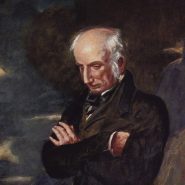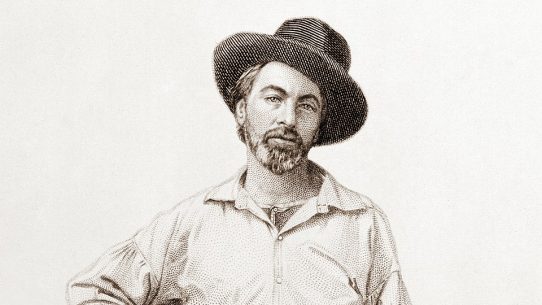Geoffrey Chaucer (c. 1343–1400) is widely regarded as the father of English literature and one of the most important poets of the Middle Ages.
Writing at a time when Latin and French dominated literary culture, Chaucer elevated Middle English to a language of art and learning. His works blend humor, realism, and social commentary with deep moral reflection, capturing the voices and rhythms of fourteenth-century England. His masterpiece, The Canterbury Tales, remains a cornerstone of English poetry and storytelling.
Early Life and Education
Chaucer was born in London around 1343, likely into a family of prosperous wine merchants. His middle-class upbringing placed him close to the commercial and political life of the city, an experience that would later inform his keen observations of society. Though little is known about his early education, he probably studied Latin, French, and Italian — the languages of government, literature, and diplomacy — which deeply influenced his poetic development.
As a young man, Chaucer entered royal service, first as a page to the Countess of Ulster and later as a courtier, diplomat, and civil servant. His travels to France and Italy exposed him to the works of Dante, Petrarch, and Boccaccio, whose writings helped shape his own poetic vision.
Literary Career and Major Works
Chaucer’s early poetry reflected the influence of French courtly verse, as seen in The Book of the Duchess (c. 1368), a dream vision written in memory of Blanche, Duchess of Lancaster. His later works, including The House of Fame and The Parliament of Fowls, expanded his range of tone and theme, moving toward a more personal and philosophical style.
In Troilus and Criseyde (c. 1385), Chaucer achieved a new level of psychological realism and emotional complexity, retelling a classical romance with extraordinary depth. But his crowning achievement, The Canterbury Tales (begun in the late 1380s), transformed English literature. Framed as a storytelling contest among pilgrims traveling to Canterbury, the work presents a vivid panorama of medieval life — knights, merchants, nuns, and millers — each speaking in a distinct voice. Though unfinished at his death, it remains a landmark of narrative art and social satire.
Style, Themes, and Influence
Chaucer’s genius lies in his versatility and realism. He mastered a variety of genres — romance, fable, sermon, and comedy — and gave English verse new vitality through his use of iambic pentameter and rhymed couplets. His language balances irony with empathy, allowing him to both critique and celebrate the world he portrayed.
Recurring themes in his work include love, morality, hypocrisy, fate, and human folly. Chaucer’s characters, drawn from all walks of life, reveal his profound understanding of human nature. His humor and irony never obscure his moral purpose: to expose the contradictions of a society divided by class and faith, yet bound by shared humanity.
Chaucer’s influence on later English writers is immense. He paved the way for poets like Spenser and Shakespeare and established English as a literary language equal to any in Europe. His keen ear for dialogue and his insight into character anticipate the psychological realism of the modern novel.
Later Life and Legacy
In his later years, Chaucer continued to hold government posts, including Controller of Customs and Clerk of the King’s Works, overseeing royal building projects. Despite periods of political uncertainty, he remained a respected figure at court. He spent his final years living near Westminster Abbey, where he likely continued to revise The Canterbury Tales.
Chaucer died in October 1400 and was buried in Westminster Abbey — the first writer interred in what would later become Poets’ Corner. His reputation grew steadily in the centuries that followed, and by the Renaissance, he was hailed as the founder of English poetry.
Today, Chaucer’s works endure for their wit, humanity, and linguistic richness. He stands as a bridge between the medieval and the modern, transforming English verse from borrowed imitation into original art.
Notable Works
- The Canterbury Tales (c. 1387–1400)
- Troilus and Criseyde (c. 1385)
- The Book of the Duchess (c. 1368)
- The House of Fame (c. 1379–1380)
- The Parliament of Fowls (c. 1382)
Related Poets
Dante Alighieri, Giovanni Boccaccio, John Gower, Thomas Hoccleve, Edmund Spenser




